

THE CHALLENGE CONTINUES:
ONTARIO’S GAME PLAN FOR INVESTING IN PUBLIC TRANSIT



ONTARIO’S GAME PLAN FOR INVESTING IN PUBLIC TRANSIT
Tales from the Underground: Toronto-York Spadina Subway Extension
ORBA Members Lead the Change As road builders embrace technology
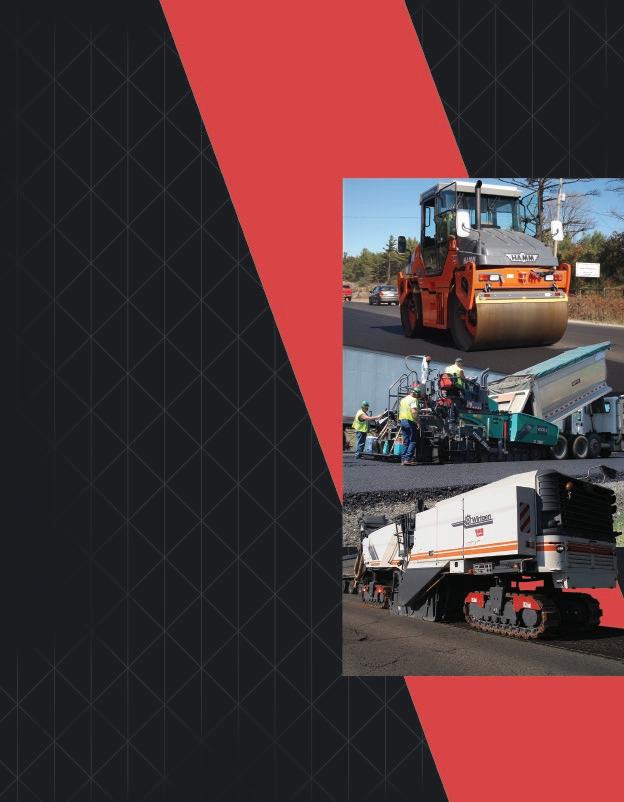






















is published quarterly for:
The Ontario Road Builders’ Association
365 Brunel Road, Unit 1 Mississauga, ON L4Z 1Z5
Tel: (905) 507-1107 Fax: (905) 890-8122 www.orba.org
Publisher Robert Thompson
Editor Ali Mintenko-Crane
Sales Manager
John Pashko
Sales Executives
Gary Fustey, Pat Johnston, Mike Manko, Walter Niekamp, Jack Smith, David Tetlock
Senior Design Specialist
James T. Mitchell
Design Specialist Kelli McCutcheon
Published by:
m ediaedgepublishing.co m
33 South Station Street North York, ON Canada M9N 2B2 Toll Free: (866) 480-4717 robertt@mediaedge.ca
531 Marion Street Winnipeg, MB Canada R2J 0J9 Toll Free: (866) 201-3096 Fax: (204) 480-4420
President Kevin Brown
Senior Vice-President
Robert Thompson
Branch
The 2015 construction season has come to a close, and fortunately it has been a nice, slow wind down. I’m sure you’ll agree this is a welcome change compared to the early winters we’ve experienced over the last two seasons.
I would like to start off by thanking the Ministry of Transportation (MTO) and our Corporate Financial Assurance Audit Service Team (CFAAST) Committee for negotiating the final elements of the CFAAST implementation. We have already started communicating some of the changes to the qualifications and the dispute resolution process and will be evaluating the effectiveness of the new process through regular reporting and annual reviews as part of the implementation process. We will also be providing updates to the new dispute resolution process at our 2016 Convention and Annual General Meeting, and through a new course in the Road Building Academy.
Speaking of which, the 2016 Road Building Academy is shaping up to offer some excellent training courses for members. Taking place from February 29 - March 4 at Sheridan College in Brampton, the 2016 programming will feature an expanded slate of exclusive course offerings designed to reach more staff among both contractor and associate member companies.
We recently held our annual Convention on February 1-2 at the Fairmont Royal York in Toronto and featured two days of impactful and informative events based on the theme, “Driving Performance.” Thank you to everyone who attended the Convention. We look forward to sharing a number of stories and photos from the sessions and presentations in our next issue (Spring) of Road Builder.
Both these initiatives are crucial to helping our members maintain success in today’s business climate. And surely, there are many changes, opportunities and challenges to keep in mind. For example, with winter now here, we are seeing some changes to winter maintenance contracts. There have been some contractors who have exited contracts and RFP’s issues on RAQs. There have also been changes made to the contracts since the Kenora contract was tendered in June, and the MTO has incorporated some of the feedback the industry provided through the September Town Hall winter maintenance meeting.
Additionally, we completed our four Roundtable Alternative Delivery Model (ADM) sessions across Ontario,

through which we were able to have an excellent dialogue and discussion between members, MTO, Infrastructure Ontario (IO) and Metrolinx. We look forward to sharing feedback with members around the outcomes from these roundtables at the convention and through other communication opportunities. This feedback will assist us in continuing discussions with our public sector owners on issues and concerns and will help us formulate strategies around working to have more members engaged in ADMs.
Red tape is something all of our members tell us impacts the efficiency of their business. This is why we approached the Ministry of Infrastructure and Economic Development to conduct a Red Tape Roundtable. We are hoping to reduce a number of obstacles frustrating and impeding business for our members by working alongside the Ministry and Ministries affecting the red tape challenges.
Finally, I would like to thank ORBA’s volunteers for all of the time and effort they put into committees and the Board of Directors. Without these volunteers, the industry would not be able to accomplish the things we have done (and have yet to do). As Blair McArthur’s term as President/Chairman nears an end on February 2, 2016, I would especially like to thank him for the countless hours he has spent working on association business. I would also like to send my appreciation to Allan West for stepping up to the President/Chair role at our upcoming Annual General Meeting.
There are some very exciting things in the works for 2016, both for the association and the industry. 2015 was a very successful year for ORBA in terms of providing strong association product and service offerings, financial results and industry wins. Look for highlights in Ashley De Souza’s column, Around Queen’s Park.
It’s hard to believe that we have begun a new year already. I wish your company great success for 2016. As always, please continue to send any issues, challenges, opportunities or feedback my way at geoff@orba.org.






In 2015, ORBA’s government relations and advocacy program continued to hit its full stride. With the support of our committees and the Board of Directors, ORBA’s government relations team work has been extremely active on a multitude of files and issues, across several ministries and government agencies, that have been ongoing and that has or will continue to be addressed.
Currently, ORBA’s issues list is over 52 issues and growing. Each issue is identified either through an appropriate committee or member concern and is assigned a staff lead and respective committee lead.
Below is a quick summary of the work ORBA has been undertaken on your behalf:
ORBA has embarked on a comprehensive research, engagement and awareness project on ADMs with the entire membership and our public sector owners, namely the MTO, Infrastructure Ontario and Metrolinx. Four roundtables session were held across Ontario with over 140 registrants from 50 ORBA member and associate member companies in Ottawa, Sudbury, Kitchener and the GTA.
More work on this top priority issue for ORBA will continue in 2016. Stay tuned.
ORBA launched an “Open for Business” roundtable process with the Ontario government exclusive to ORBA members in December. This initiative which looks at ways to reduce red tape and the regulatory burden on businesses is responsible for interfacing with ministries across government to ensure progress and resolution of an industry’s issues within appropriate timelines.
A closing roundtable has already been scheduled for March 23rd to resolve agreed upon issues: O/O Permits, Permits to Take Water, information sharing and contracting compensation regarding Species At Risk compliance and Recycled Materials.
ORBA hosted its first Queen’s Park Reception last May. This non-political, non-partisan event was very well attended with over 200 people stopping by including over 60 MPPs from all 3 political parties. We hope this event will become an annual event as we continue to raise the profile of the ORBA at Queen’s Park.
Our municipal government relations strategy was launched in 2015. Although still in its infancy stage, ORBA is already a part of a number of working groups municipally and have already met with over many mayors and Regional Chairs. Adding municipalities as part of our Conven-

by ASHLEY DE SOUZA Director, Government Relations
tion was a huge success in 2015 with over 28 cities and 8 regions invited to participate again in 2016.
ORBA continues to advocate for commitments from all levels of government to ensure that substantive measures are being taken to eliminate the staggering infrastructure deficit currently facing municipalities in order to place municipalities and Ontario at a competitive advantage.
ORBA is pleased with the passing of the Act as it would encourage longterm infrastructure planning and economic growth. ORBA worked closely with the government to addresses issues it had with the initial prescriptive approach and language in the Bill to set a threshold of apprentices to be employed or engaged on construction projects.
Through the IHSA Civil Committee ORBA helped spearhead a successful MOL research grant application to be led and conducted by Laurentian University. The $192,472 grant will fund a 2-year research project investigating line of sight perceptions and reversing technologies.
The Ontario Government, and the Ontario College of Trades, has accepted the recommendations made by former Secretary of Cabinet Tony Dean, in his report, Supporting a Strong and Sustainable Ontario College of Trades.
Among the main recommendations made in his Report, Dean noted that the College should move to an evidence-based, independent decision making process for trade status reviews based on risk of harm as the key factor, and additionally the College should create an appeal mechanism whereby enforcement orders issued by OCOT inspectors can be reviewed by experts at the Ontario Labour Relations Board.
Dean was appointed in October 2014 by the Minister of Training, Colleges and Universities to undertake a review of Issues Related to the Scopes of Practices and Classification/Reclassification of Trades. He met extensively with various industries, stakeholders, organizations and associations during the Review process. ORBA participated in the Review process through its involvement in the Ontario Skilled Trades Alliance.
The 2015 CAA Worst Roads Campaign was launched in March, which included a regional component, with CAA unveiling the worst roads in seven regions across the province along with the usual list of Top 10 Worst Roads in Ontario. The results of the campaign were announced on May 21, 2015.
ORBA once again provided the technical analysis of the nominated roads. To better facilitate the technical analysis, ORBA developed a standardized guide which included a “how to” conduct the inspection manual, an inspection form and a contractor feedback form.
Fifteen ORBA member companies provided technical analysis on the 50 nominated roads across the province. Thank you to all that offered their assistance.
ORBA struck a working group to tackle the different perspectives and positions ORBA members have with relation to the Construction Lien Act reforms and payment in construction. Twenty different companies volunteered to participate in the ORBA working group as well as take an individual company
survey on the issues which is being Chaired by Bruce Reynolds and Sharon Vogel from BLG.
ORBA has tasked Dawson Strategic Research to conduct research on the impact of the cap and trade program on the road building industry in Quebec and California and how potential program implementation can impact our industry in Ontario.
Ontario will be designing a cap and trade program that can link to the joint Quebec/California program. Linking could require harmonization of some rules, e.g., price stability mechanism, trading rules, market rules, limit on the use of offsets, enforcement provisions. The cap and trade program would undertake an economy-wide approach and draft regulations are expected to be rolled out in March or April.
2015 has proven to be a very active and busy year here at ORBA. And,


we’re just getting started! 2016 already looks to be another busy year here at ORBA as we continue to tackle the issues and challenges facing your company and the industry as a whole. The objectives of the ORBA’s government relations program are threefold:
1. To promote infrastructure investments;
2. To promote fair, open, transparent and equitable procurement practices, and
3. To influence changing legislation/regulation that will have an impact on the businesses of member companies.
As always, if you ever need more information or assistance on a specific topic or issue, please do not hesitate to contact me directly at ashley@orba.org or (905) 507-1107 ext. 223. We’re here to help.







by RICHARD WOODBURY
While gridlock is a problem for most North American cities, it’s one heck of a problem in the Greater Toronto Hamilton Area (GTHA). According to the province, the average commute for a GTHA resident is 82 minutes per day from home to work, which it says is longer than “many major international cities, including Los Angeles.” In fact, a 2012 U of T Magazine article says the U.S. Department of Transportation labelled Highway 401 as “officially the busiest stretch of freeway anywhere in North America.”
Regardless of the stats, gridlock is something many Ontarian drivers know and live out on a daily basis. Gridlock impacts us in many ways.
On a simple level, it takes longer for people to commute to work, which also means people have less time to spend with family and friends. It also takes a toll on people’s health and increases their stress. It even plays a role in the jobs people choose because gridlocked roads limit the employment choices people can make. A Toronto Region Board of Trade report released in March cited U.K. research that found “effective transportation and road infrastructure” allows workers “to better connect with employment centres” and improves the performance of the labour market because skilled labour is better matched with jobs and this reduces unemployment and total productivity.
So, what happened that got us to this present-day state? “The transportation system has simply not kept pace with population growth,” says the Board’s report. It says for the GTHA, the population grew from 3 million in 1971 to about 6 million 40 years later. At the same time, rapid transit construction ground to a halt.
The province is expecting that by 2041, Ontario’s population will grow by 40 per cent. “That masks a real quandary for the province,” says Robin Somerville, the author of a report released in September by the Broadbent Institute that looked at the economic impact of increased public infrastructure spending. This population growth won’t be evenly distrib-
uted across the province. Rather, this growth will occur in regions that are already experiencing gridlock, specifically GTHA. The province says the regions that will experience the most growth are Durham (93 per cent), Halton (89 per cent) and Barrie (79 per cent).
Not surprisingly, massive investments in public transit are viewed as the primary way of combatting gridlock. Many transit investments are planned across the province (see sidebar for details).
Improved public transit would obviously get more people out of their vehicles and into more efficient modes of transportation, but how would that help businesses? “The rationale for it is you lower costs in transportation, warehousing and distribution,” says Somerville. Because businesses would spend less time and effort moving product and travelling to provide services, it would improve their competitiveness and productivity.
Public transit is just one piece of public infrastructure, which also includes things like roads, schools, hospitals, and water and wastewater treatment systems. Estimates have pegged the country’s infrastructure deficit as high as $400 billion due to decades of not spending enough on it. “The costs of neglecting our public infrastructure are not zero: Allowing our public infrastructure to continue to decay imposes costs at least equal but opposite to the benefits estimated in this study,” said Somerville’s report. “The competitiveness of private businesses in Canada is tied to the quality of our public assets, so a significant and sustained public infrastructure spending initiative is required if households and businesses are to continue to enjoy the high standard of living provided by our public infrastructure.”
“Transportation is considered the most important infrastructure issue facing Canadian cities and will require the most funding.” - Source: The Sustainable Cities Challenge in Canada report.












THERE IS NO SHORTAGE OF PUBLIC TRANSIT PROJECTS UNDER CONSTRUCTION OR IN THE PLANNING STAGES IN ONTARIO. HERE ARE A FEW:
This 8.6-kilometre extension replaces a shuttle bus that runs from Downsview Station to York University. Under construction and expected to open in 2017, the expected capital costs are $2.6 billion. See the profile project feature on page 22.
Nineteen kilometres will be added from Mount Dennis (Weston Road) to the Kennedy station in Toronto. Expected to be finished by 2020, the expected capital costs are $5.3 billion.
Running between McMaster University through downtown Hamilton to Queenston Circle, this line is part of a commitment from the province to pay up to $1.2 billion for an LRT line and expanded GO rail service in the city. Construction should begin in 2017 on the Go work, while LRT construction will start two years later.
This 20-kilometre line with 22 stops will run between Mississauga and Brampton. Construction should start in 2018 and be completed by 2022.
London is working on determining where “Rapid Transit will go, what it will look like, and how it will be implemented,” says the city’s website. By next summer, a detailed plan design and how it will be funded will be developed.
The $2.1-billion Ottawa Confederation Line project is a 12.5-kilometre Light Rail Transit (LRT) system that will replace the city’s Bus Rapid Transit (BRT) system. In early January, Mayor Jim Watson took dignitaries and the media on a tour of the project, which he says is on time and on budget.
In late October, the province announced it hired David Collenette, a former federal transportation minister, to act as a special advisor to help implement high-speed rail in the Windsor, London, Kitchener-Waterloo and Toronto corridor.
As well, the quality of public infrastructure plays a role in attracting or deterring foreign investment.
“Research shows that inadequate public infrastructure tends to drive away foreign investment more so than quality infrastructure attracts private investment,” says the website of Infrastructure Canada.
As part of its Building Ontario plan, the province says it will invest more than $130 billion in infrastructure over 10 years, roughly $50 billion of which will be for transit in GTHA.
Investing in infrastructure such as public transit would offer both short and long-term economic benefits. Somerville’s paper examined the impact of a five year, $50-billion public infrastructure spending program. He found that GDP rises $1.43 per dollar of spending in the short term, but in the long term, it increases to between $2.46 and $3.83, which is a sizeable return on investment.


As well, “Private-sector investment rises by as much as $0.34 per dollar spent in the short term, and by up to $1.00 per dollar spent in the long run,” says the report, adding that businesses are also more productive and competitive and wages for Canadians rise, leading to higher standards of living.
Somerville believes infrastructure investments are crucial to reversing the competitiveness and productivity losses experienced in recent decades. “I think if we can turn that around, it’s a key part of building our long-term prosperity and competitiveness,” says Somerville.
With gridlock as bad as it is, coupled with a growing population, huge investments in public transit are a must if Ontario is to improve its competiveness and productivity, and once again become the economic engine of Canada.











































by HOLLI MONCRIEFF
Technology is changing the way business is done, and nowhere is that more true than in the road-building industry.
Lauren Lake is the co-founder of Bridgit, a Canadian software company that offers mobile solutions for the construction industry. She says the industry-wide adoption of mobile devices has the potential to dramatically improve communication, while resolving issues in a timely manner.
“Mobile devices are finally starting to be widely used, both in the office and in the field,” she says. “It opens up the possibility of having all these evolved solutions.”
There is a caveat. In order for mobile devices to have the greatest positive impact on a company’s business, everyone on the team has to use them.
“You can get this whole team approach when everybody has this
added method of communication,” says Lake. “You can’t have just half the team getting information through their smart devices.”
Another technological advancement she believes will become more widely used in 2016 is drones.
Some of the tasks drones can be used for include aerial photographs, site investigations, and site analysis.
“People are using drones for all sorts of things—assessment of areas that are not easily accessible to humans, or where it’s not safe for people to assess,” says Lake. “Drones are an efficient way to get more information than we’ve ever had before.”
Lake also sees the industry embracing the use of wearable devices, and expects that will become more prevalent in 2016.
When it comes to which technology is the most valuable, it really depends on the company. From drones to
GPS-guided drills, here are some of the top picks for the technological advances that are destined to have the most impact on the industry.
Hardware and software innovations will continue to make data collection easier in 2016, predicts Paul Conrad of Topcon Sokkia.
“The construction industry is looking towards safer, faster and more efficient means to collect and archive spatial data,” he says. “In addition, software and workflows are making an impact. Building information modeling (BIM) is certainly a trendy buzzword and is slowly making inroads into the Canadian culture. BIM is more of a process than any specific piece of software or hardware.”
As for other trends, Conrad says drones, or unmanned aerial vehicles (UAVs), are having the biggest impact in the industry. Mobile scanners are also important, as they collect tera-
bytes of spatial data, and terrestrial scanners are becoming the standard in as-built monitoring projects.
Austin Powder sees technology allowing for safer and more precise blasting during road and construction work. Society will no longer tolerate damaging vibrations and unsafe blasting (fly rock) as a cost of doing business, says Keith Taylor, General Manager for central Canada.
“We’re seeing a lot more drills that are GPS controlled and low-density explosives with electric detonators,” he says. “This allows a lot more accuracy in our drilling patterns and more grade control. We have better control of the blasts and better fragmentation.”
Electronic detonators allow for precise millisecond timing of blasts with no unintended overlaps of firing holes. These detonators are used daily in quarry blasting, but due to cost, there is resistance in the road and construction industry.
BOMAG (CANADA) INC.
BOMAG developed the ECONOMIZER for plate compactors, but it has been expanded to most of the company’s tandem and single drum vibratory roller lines. This unique compaction technology automati-
cally indicates the degree of compaction in real time.
“It can be used to improve compaction results on a wide variety of applications, from driveways and parking lots to country roads and highways,” says Dan Church, Sales Manager for BOMAG. “Contractors can use ECONOMIZER to do proof rolling and search for and address weak areas.”
Since the operator can see immediately when compaction has been optimized, ECONOMIZER helps to avoid unnecessary passes, which result in wasted fuel and time.
Technology is also being used to improve industry safety. Toromont CAT is seeing a push towards using technology to fight operator fatigue.
“One product uses a vision system to track the operator’s eye movements to see if they are distracted or about to fall asleep. The alerts are sent back to a manager to review, including a video clip of the incident,” says Dan Martin, EM Solutions Supervisor. “The system also lets you do an in-vehicle alert through an audio system, or send vibrations through the seat.”
Another safety measure that’s being included in excavators is integrated grade control.
“This results in big productivity gains, because you don’t need to have a grade man hopping in and out of a hole,” Martin explains. “This is starting to become a factory standard. The machine knows exactly where the bucket is and when it hits grade.”
SUCKER
Super Sucker is a total solution provider, specializing in hydrovac excavation, coring, utility locating, daylighting, and backfill restoration. The company responds quickly to time-sensitive and emergency situations, getting on-site and excavating when their customers need it.
Bryce Jaspers, Business Development Manager for Super Sucker, believes suction excavation will have a significant impact in 2016.
One suction excavation truck replaces the work that used to be done by many, simplifying the entire job. The process is up to 12 times faster, so overall costs are significantly reduced.
These technological advances will continue to improve efficiency and safety in the road-building industry, now and for many years to come.
For an extended version of this article, visit ORBA’s website at orba.org.

BY CARISSA TANZOLA & PATRICK GANLEY
In 2015, there have been numerous developments in labour and employment law in Ontario and it is important for construction employers to understand how these developments impact the workplace. Specifically, we want to draw your attention to Ontario’s Changing Workplaces Review, Bill 132 – Sexual Violence and Harassment Action Plan Act, and Changes to Joint Health and Safety Committee Certification.
A detailed discussion of each of these developments can be found on ORBA’s website at orba.org, including additional information about mandatory working at heights training, the Ontario College of Trades (Dean Report) and new obligations under the Accessibility for Ontarians with Disabilities Act .
The Changing Workplaces Review (Review) involves a series of public consultations to solicit views on
reforming Ontario’s employment and labour laws, including the Employment Standards Act, 2000 and Labour Relations Act, 1995 (LRA). While topics for review range from very broad issues (i.e. the demand for skilled trades and the rise of “non-standard employment”), the review will not address the construction industry provisions of the LRA; minimum wage; and any matter for which an independent review has already been initiated, including the gender wage gap and migrant workers, among other topics. The Ontario government plans to introduce legislation in the fall of 2016.
Bill 132 expands the definition of “workplace harassment” in the Occupational Health and Safety Act (OHSA) to specifically include “workplace sexual harassment.” This proposed definition is very similar to the one currently found in the Ontario Human Rights Code. However, its inclusion in the OHSA creates a
pro-active obligation on an employer to take steps to prevent workplace sexual harassment prior to a complaint being made. Under Bill 132, every employer will be required to have a workplace sexual harassment policy including a process to deal with a complaint and manage information obtained during the process; conduct an investigation into an incident or complaint of workplace sexual harassment and harassment in general; and inform the complainant, in writing, of the results of the investigation and what corrective action will be, or has been, taken.
Also significant is the authority granted to a MOL inspector to order an employer to conduct an investigation into a workplace harassment complaint using an independent third party (at the employer’s expense), and cause the third party to produce a written report for the employer. As at the writing of this article, it is not clear whether the third party must in some way be

certified or accredited to carry out such an investigation.
On March 1, 2016, changes to the Joint Health and Safety Committee (JHSC) Training Standards will come into effect. The new standards contain requirements for the approval of certification training programs and training providers. Key components include: Part One Training generic to all workplaces where certified JHSC members are required under the OHSA; Part Two Training that is workplace-specific, focusing on recognition, assessment and control of hazards; and refresher training every three years. At workplaces where a JHSC is required under the OHSA, unless otherwise prescribed, at least one JHSC member representing the employer and one representing workers must be certified by the CPO. Certified JHSC members who completed both
Part One and Part Two training under the 1996 standards, prior to March 1, 2016, will continue to be certified and will not be required to complete further training under the new standards.
Carissa Tanzola and Patrick Ganley are lawyers with Sherrard Kuzz LLP, one of Canada’s leading employment and labour law firms, representing management. Carissa and Patrick can be reached at (416) 603-0700 (Main), (416) 420-0738 (24 hour) or www.sherrardkuzz.com.
The information contained in this article is provided for general information purposes only and does not constitute legal or other professional advice. Reading this article does not create a lawyer-client relationship. Readers are advised to seek specific legal advice from Sherrard Kuzz LLP (or other legal counsel) in relation to any decision or course of action contemplated.
The Changing Workplaces Review (Review) involves a series of public consultations to solicit views on reforming Ontario’s employment and labour laws, including the Employment Standards Act, 2000 and Labour Relations Act, 1995 (LRA).
Successful construction begins with exceptional groundwork; so should your surety and insurance relationship. At Travelers Canada, our dedicated and knowledgeable account executives, and legal and claim specialists, provide surety and insurance solutions to meet your needs. We are here to help you. To learn more about our construction surety bonds and insurance, contact your broker or visit travelerscanada.ca.
It’s better under the umbrella®
1,900+
Canadian employers shared their hiring plans for Q1 2016
81
3

BY JIM PETERS
THIS ARTICLE IS THE THIRD OF A NEW SERIES PROFILING ONTARIO’S KEY TRANSPORTATION INFRASTRUCTURE PROJECTS.
Like many major cities with complex underground subway systems, the Toronto Transit Commission’s (TTC) Toronto-York Spadina extension project has had its share of ups and downs—no pun intended. Complications, of course, can be expected with a project of this magnitude—complete with the added complexity of an underground construction environment.
The subway extension is an 8.6 km line that will run from Sheppard West Station (currently known as Downsview Station) northwest
through York University—within the City of Toronto—and north to the Vaughan Metropolitan Centre in the Regional Municipality of York. The extension will provide a critical link to TTC’s existing system across the municipal boundary between the City of Toronto and the RM of York and will be the first rapid transit line to cross Toronto proper’s boundary.
The in-service date for the new subway extension is planned for the end of 2017, when patrons should be able to catch a ride northbound
from Sheppard West all the way to Vaughan Metropolitan Centre in approximately 14 minutes, say the TTC’s latest estimates.
BLACK & MCDONALD AWARDED MAJOR
One of the contractors involved with the project from the beginning is Black & McDonald. Headquartered in Toronto, Black & McDonald is a decades-old multi-trade prime contractor serving government, industry and commercial institutions across Canada, the U.S. and
The original cost of the extension is $2.6 billion, funded jointly by the Government of Canada, the Province of Ontario, the City of Toronto and The Regional Municipality of York. At the time of print, additional funding of $400 million has been requested to bring the total budget to $3.1 billion, to complete the project by the end of 2017.
overseas. The company was awarded two contracts related to the new extension: the tunnel equipping contract and the traction power substation equipment installation.
Joe Segna, Black & McDonald’s Southern Ontario civil division manager says, “The traction power substation project consists of the installation, testing and commissioning of TTC-supplied traction equipment to electrify the line— including 27.6 kV and 4.16 kV AC switchgear, transformers, rectifiers, rectifier transformers, 600 V DC switchgear, and AC/DC cabling and controls. It also includes the supply, installation and commissioning of battery system, heaters and the negative and positive bus system for four of the six stations along the line.”
Black & McDonald has had 28 years of experience working on traction power systems and a long history working with TTC. Segna says, “Our understanding of complex transit projects has helped us to anticipate most of the requirements for the project—so we’ve worked cooperatively to expedite the concept and to be ahead of schedule. Every site has its own challenges, different general contractors and working conditions, but in all cases our teams have worked together to maintain smooth progress.”


















































As of this writing, Black & McDonald has completed two of the stations— Downsview Park and Vaughan Metropolitan Centre—and the work on Pioneer Village Station had just begun.
The three main techniques used to build the subway extension are tunnel boring, and “cut and cover” construction and sequential excavation method (SEM). SEM was used
to build a Double Ended Pocket Track Housing Structure (DEPTHS) under the Finch Hydro corridor. Construction of the subway tunnels was completed in November 2013 using four tunnel boring machines, affectionately known as “Holey,” “Moley,” “Yorkie” and “Torkie.” With the completion of the boring process, the machines had drilled a total of 6.4 km of twin tunnels. Depending on the variety of soil conditions encountered along the
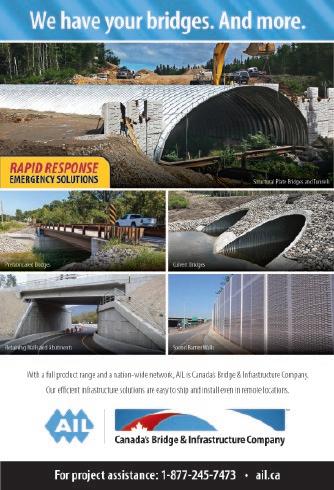
way, tunnel boring machines of this type can progress approximately 15 metres per day.
One of the more interesting, and complicated, components along the route has been the York University Station project. The EllisDon company, headquartered in London, Ontario, was awarded the station contract in July 2012. Assistant project manager Aaron MacLean adds, “We successfully tendered our contract with a lump sum bid after a pre-qualification process.”
Senior project manager Patrick Smith says, “In its 60 plus years of experience, EllisDon has worked on virtually every kind of construction site imaginable. The York University Station is located at the heart of the university’s campus and will be one of the first landmarks visitors see when entering the campus from the main entrance—a very important consideration for us and this prestigious school.”
Assistant project manager Aaron MacLean outlined some of the unique elements of the York Station project, “There are clearly some architecturally interesting design elements here, such as:
• A curved, reflective, metal roof— like a boomerang-shape.
• Architecturally exposed concrete structural “V” columns.
• An LCD-sensored artwork installation spanning the platform level to the concourse that will interact with the motion of the trains entering and leaving the station.
• The “light scoop” feature that draws natural light down through the concourse level to the platform level.
Construction on all six new stations is well underway— passersby can now see the entrances and bus terminal structures rising above the ground. The station line itself consists of a 6.2 km segment from Sheppard West to Pioneer Village in Toronto; and from Pioneer Village the line runs 2.4 km to connect to Vaughan Metropolitan Centre in York.
The six new stations include:
• Downsview Park in Park Downsview Park, (lands are owned by the City of Toronto) adjacent to the Barrie GO transit line.
• Finch West at the intersection of Keele Street and Finch Avenue West.
• York University in the York University Common.
• Pioneer Village: at North West Gate and Steeles Avenue West.
• Highway 407 south of Highway 407 on Jane Street.
• Vaughan Metropolitan Centre at Highway 7 and Millway Avenue.
TTC has also replaced the entire Line 1 fleet with newer and more comfortable “Toronto Rocket” (TR) trains and will acquire additional TR trains for the Toronto-York Spadina Subway Extension.
As with any project of this magnitude, extensive environmental studies and approvals were required from various government agencies before construction could begin.

All have presented their own challenges—but that’s also what makes it so interesting.”
Some other issues EllisDon faced on the project include a delayed start—in turn creating a more condensed schedule and restricted site limits combined with a requirement to maintain bus traffic through the area during all stages of the construction. Smith says, “This is a crowded campus with buses coming in and out constantly - not unlike downtown Toronto. And we’ve had to work in some real tight spaces, so the real estate has been a challenge.”
As with any project of this magnitude, extensive environmental studies and approvals were required from various government agencies before construction could begin. Key milestones include:
• Provincial environmental assessment was approved for the Sheppard West to Steeles West portion in March 2007.
• Provincial environmental assessment was approved for Pioneer Village to the Vaughan Metropolitan Centre portion in April 2007.
• Federal environmental assessment was approved for the entire project in March 2008.
Scheduled for completion by the end of 2017, the Toronto-York Spadina extension that includes six new stations will certainly help improve the traffic flow of a continuously growing population in Toronto and the Greater Toronto Area (GTA).

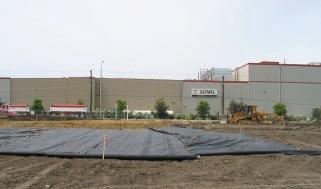








BY MATTHEW BRADFORD
Spring 2015 marked the launch of ORBA’s municipal strategy, re-enforcing the association’s focus on building relationships with municipal leaders and contractors. The initiative was created to better serve ORBA members taking on municipal work and position the association to take advantage of upcoming municipal projects.
“Initially, the strategy was identified in our strategic plan as something that would bring additional value for our members, since a lot of our contractors work on the municipal level and there’s a lot of areas of opportunity and growth,” explains Nadia Todorova, ORBA Policy Analyst.
The strategy was introduced alongside a new “municipal membership” category created to extend ORBA’s membership to municipal contractors. As part of its focus on municipal issues, ORBA created a Municipal Affairs Council to provide a forum for municipal contractors. ORBA staff spent 2015 conducting introductory and follow-up meetings with municipal officials for the
purpose of introducing ORBA and its members’ issues to municipalities across the province.
“The purpose of this strategy has been to forge working relationships with municipalities and to create a framework which will provide an avenue for dialogue to address any municipal issues and concerns our members may have,” says Todorova.
To date, as part of the municipal strategy, ORBA staff have met with municipal leaders across Ontario. These include York Region Chairman and CEO Wayne Emmerson, Hamilton Mayor Fred Eisenberger, London Mayor Matt Brown, Guelph Mayor Cam Guthrie and Oakville Mayor Rob Burton. Elsewhere in Ontario, ORBA representatives have met with Ottawa Councillor Keith Egli, Greater Sudbury Mayor Brian Bigger, and Oshawa Mayor John Henry.
Those meetings have included discussions on key issues such as Ontario’s municipal infrastructure deficit, open tendering, excess soils, recycled aggregates, utility locates, and municipal OPS specs, among others.
ORBA also welcomed municipal stakeholders to a number of its annual events. These included its Summer Round-Up and President’s Tour, the latter of which saw participation from municipal officials at every stop along ORBA President Blair McArthur’s tour.
“To have them involved in actual ORBA events and meet and mingle with our contractor and associate members was fantastic,” reports Todorova.
While many municipalities may follow the same provincial guidelines, each carry out their operations in different ways. With this in mind, ORBA recently tasked Cameron McKinnon to design a strategy for Ontario’s municipalities, beginning with a pilot project in the Waterloo Region.
“Given the fact there are 444 municipalities in Ontario, we thought it would be very prudent to start with a pilot project in one area of the province to be as effective as possible and recalibrate the approach as needed,” explains Todorova.
The Waterloo Region was selected as a testing ground for its large volume of ORBA members. McKinnon and the association hope to use the pilot project as a means to fine-tune a more universal approach that will be used to commence similar strategies with other jurisdictions.
Adds Todorova: “It’s important we learn how to tailor our approach to each individual municipality in order to really be successful in the way we engage them in dialogue.”
2015 was a productive year for ORBA’s municipal strategy. Moving forward, the plan is to build on the strategy’s goals by leveraging events such as its 2016 Convention to strengthen its municipal ties and knowledge base. For example, ORBA has already invited reps from 38 municipalities and six regional municipalities to its 2016 Convention, representing over $4 billion of transportation infrastructure projects.
“In 2015, we laid out some very strong foundations in terms of our introduction into the municipal sphere, and we’ve had a number of municipal contractors join the association. We’re looking forward to building on the work our team has put together in the new year,” says Todorova.
Elsewhere, ORBA plans to continue working with its Municipal Affairs Council to identify future networking opportunities, and ways in which to help its municipal contractor members find opportunities in the work to come.
“This strategy is all about relationship building which is a process, not an event,” insists Todorova. “We plan to continue building upon our municipal strategy as it expands and helps us forge new relationships.”
“The purpose of this strategy has been to forge working relationships with municipalities and to create a framework which will provide an avenue for dialogue to address any municipal issues and concerns our members may have.”
- Nadia Todorova
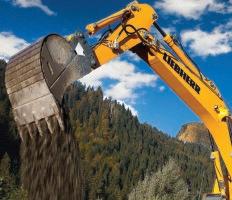














ASSOCIATE MEMBER
QMB Barrier Systems Inc.
Tel: (905) 660-5521
www.qmb.ca
Contact: Chris Grondin, QMB Director of Operations, Ontario
QMB is a family business that takes pride in providing exceptional service and product support. Everything we do is governed by three principals: quality, safety and efficiency. Constantly following the latest developments in highway safety, QMB provides innovative solutions to the industry.
From our Quickchange® moveable barriers to roadside safety products to automated highway SwiftGate™ and SwiftSign™, do not hesitate to contact us if you have questions or require information. We will always take the time to get you the answers and the information you need.

M Con Pipe & Products Inc.
Tel: (519) 632-9112
www.mconproducts.com
Contact: Mark Sabine, Sales Manager
Central Precast Inc. was founded in 1956 in Ottawa, ON, as a precast concrete operation producing a variety of concrete products including circular maintenance holes, catch basins and valve chambers. As the Eastern Ontario market grew and demands for quality precast products increased the Mion family added a larger precast operation in 2004 known as M Con Products Inc. in Carp, ON. This company now handles the bulk of the demand for precast concrete pipe, maintenance hole, valve chamber and box culvert market in Eastern Ontario.
ASSOCIATE MEMBER

Carrier Centers
Tel: (519) 539-0971
www.carriercenters.ca
Contact: Richard Ross, Vice President
Carrier Centers has been a proud dealer of the most trusted names in the transportation industry since 1960. Specific to the construction industry we specialize in names like International, Trout River, Doepker, Econoline, Eager Beaver, Bobcat, London Mixers, and Stone Slinger. With seven locations to serve you better in South Western Ontario, we strive to provide our customers with Quality People and Quality Products.

Fitzgibbon Construction Limited
Tel: (613) 962-3906
http://fitzgibbonconstruction.com
Contact: Greg Demille, President
Since 1945, Fitzgibbon Construction has been exceeding customer expectations by maintaining the core values of a family business, earning the privilege of being the contractor of choice for any size project.
We are pleased to announce that Scott Beitel has joined Platform Insurance Management as its newest shareholder.
Scott brings nearly 15 years’ experience in the Financial and Surety industry, most recently as the Senior Vice President – Construction at Canada’s largest insurance brokerage.

Scott is involved in numerous industry associations including the Ontario Road Builders’ Association, Toronto Construction Association – Construction Executives Committee, and holds a position on the Board of Directors for the Surety Association of Canada. Scott is also involved in charitable organizations including the St. Michael’s Hospital Young Leaders Foundation Committee and the United Way of Greater Toronto. Scott holds the Chartered Professional Accountant (CMA) designation, as well as an Associateship of Canadian Surety Bonding designation from the University of Toronto.
Platform prides itself on being expert brokers in the area of construction insurance, surety and performance security; working exclusively with contractors and developers. At its core they focus on delivering solutions to their clients which provide protection, reliability, opportunities for growth and a strategic advantage, all while building a lasting relationship.
Carillion Canada Inc. was recognized as Canada’s Safest Employer with two awards at the 5th Annual Canada’s Safest Employers Awards gala on October 28, 2015. A Gold award was presented to Carillion in the Building and Construction category and a Silver award in Psychological Safety.

“We are honoured to receive these two awards which recognize the commitment and dedication of our employees in delivering a safe and healthy workplace,” says Carillion Canada President and CEO Simon Buttery.
This is the second year running that Carillion has been recognized as one of Canada’s Safest Employers in Building and Construction and its first year in winning the Psychological Safety award.

Cartwright Avenue, Toronto, Ontario M6A 1V5 Tel: (416) 785-5110 Fax: (416) 785-5120 www.petomaccallum.com

BY JIM SANDERSON
As 2015 wound down, Prime Minister Justin Trudeau started to leave his footprint on the global landscape, flush with victory and full of good intentions. Regardless, his early days saw cracks starting to form and questions arose about whether he could keep all his promises. The markets are equally unpredictable. But at least investors have the power to reduce self-induced risks that threaten long-term investment returns. One of the biggest risks is trying to anticipate future market ups and downs, long understood to be a futile strategy for protecting and building long-term wealth.

Canadian manufacturers continue to experience weak sales, rising costs and, along with now-profitable banks, are bracing for economic head winds predicted to blow hard in 2016.
As we enter 2016, I thought this would be a good time to stress the importance of avoiding betting on future events and choosing a more realistic and potentially successful strategy.
As an investor, there are two strategies to consider.
ECONOMIC HEAD WINDS BREWING?
While Canada officially emerged from a mild economic recession, concerns continued regarding global economic growth, with the International Monetary Fund lowering its forecast to 3.1 per cent global gross domestic product growth from its 3.5 per cent growth forecast from last summer.*
Though analysts suggest a six-year bull market is gradually abating and a recovery is slowly taking hold, many
1) Active investing which involves selecting stocks for a portfolio in an attempt to drive that portfolio to outperform the index against which it is measured. A manager actively manages the portfolio, buying and selling stocks at their discretion in order to try to “beat” the market.
2) Passive investing which involves selecting stocks that mirror the index against which a mutual fund is measured. Indexing is really a low-cost way to replicate the performance of a particular asset class. An
index fund is a mutual fund with an investment portfolio that mirrors a broad-based portfolio. Index funds match the Standard & Poor’s /TSX Composite Index, indexes reflecting mid-and small-capitalization stocks, foreign market indexes and bond indexes, for example. The sole object of passive investing is to ensure that the equities held in the fund at any time are identical to and in the weighting as the index they are measured against.
Active investing, strategy 1, is expensive and related management and trading fees can severely reduce the value of an investment portfolio over time. Most active fund managers have to beat their benchmark index by 1-2 per cent per year just to break even after expenses.
For the individual investor seeking to make portfolio decisions based on news, this presents a real challenge. First, to profit from news you need to be ahead of the market. Second, you have to anticipate how the market will react. Certainly not a particularly reliable investment strategy.
Thankfully, there is another less scattergun approach. It involves working with the market and accepting that news is quickly built into prices. Those prices, which are forever changing, reflect the collective views of all market participants and reveal information about expected returns. So instead of trying to second-guess the market by predicting news, investors can use the information already reflected in prices to build diverse portfolios based on the dimensions that drive higher expected returns.
There is a great wealth of knowledge in the science of investing. For more than 30 years, investors have been helped by the pursuit of dimen-
sions of higher expected returns through advanced portfolio design, management, and trading. There are enhanced index funds that help investors realize their financial goals by harnessing the science of capital markets based on decades of research.
The facts are that small companies perform better than large companies and value companies perform better than growth companies. An index fund is a form of investing that has historically outperformed most actively managed funds. Its primary benefit to investors is that it has lower expenses than an actively managed fund.
I want to re-emphasize the importance of having a financial plan, leveraging the power of asset allocation, portfolio
diversification, rebalancing and avoiding the temptation to go for short-term gains by trying to second guess the markets. Rather than trying to forecast the future and betting on the “stock of the month,” I recommend scientific research, discipline and putting to work your financial manager and their years of investment experience.
Jim Sanderson is a portfolio manager and senior wealth advisor with over 29 years in the investment services industry. The Jim Sanderson Group at ScotiaWealth Management specializes in creating and distributing wealth for successful individuals and corporations in the aggregate and road building industries across Canada. He helps his clients supported by a team of experts in insurance, merchant banking, trust and estates. Jim can be reached at jim.sanderson@scotiawealth. com. Call at (416) 945-4844 or visit his website at www.jimsandersongroup.com .
* Source: Investment Executive December 2015




NOVEMBER 23, 2015
TORONTO, ON
Director Ashley De Souza and Allan West, ORBA’s 1st Vice President, attended the meeting between Ontario and Toronto focusing on reducing burden on business.

NOVEMBER AND DECEMBER 2015
OTTAWA, SUDBURY, KITCHENER

MISSISSAUGA
Over 130 participants attended the four Alternative Delivery Models (ADM) Roundtables hosted by ORBA across the province in late fall. Also in attendance were the Ministry of Transportation (MTO), Infrastructure Ontario (IO) and Metrolinx to help members of the industry better understand the process around alternative procurement models for infrastructure projects.

JANUARY 7, 2016
MISSISSAUGA, ON
Francis Mongeon, Key Account Manager, Power, Infrastructure & Industry, BASF Canada (at left), welcomes Richard Stamper, ORBA Manager, Member Services to the Toronto site. The warehouse services polyurethanes, coatings, construction chemicals and hosts an Automotive Refinish Technologies (ART) Distribution Centre.






Armtec provides complete infrastructure solutions that are both innovative and cost e ective. Whether your drainage project is completely new or a bridge structure needs rehabilitating, realigning or repairing, Armtec is the leading multi-material provider that allows our customers to do more with less.
• Creative engineered solutions
• Professional advice
• Exceptional customer service

• Dedicated people
• Reputable products
• A national presence



Armtec ............................................... 33 www.armtec.com
Atlantic Industries Limited. .......... 24 www.ail.ca
Aviva Canada ................................... 11 www.avivacanada.com
B2W Software Inc. .............................. www.bswsoftware.com
Bluewave Energy ............................. 39 www.bluewave.ca
BPT Components & Parts .............. 31 www.bpt.ca
Canadian Asphalt............................ 33 www.canadianasphalt.com
Creighton Rock Drill Ltd. www.creightonrock.com
Fairmont Royal York Hotel ........... 31 www.fairmont.com
FLO Components Ltd. ................... 30 www.flocomponents.com
Fowler ................................................ 37 www.fowler.ca
GeoShack North America Inc. ....... 7 www.geoshack.com
Hutcheson Sand & Gravel ............. 13 www.hutchensand.com
Leica Geosystems Ltd. ............ 9 & 35 www.leica-geosystems.com
Liebherr Canada Ltd. ..................... 29 www.liebherr.com
Master Promotions Ltd. ................. 25 www.masterpromotions.ca
Nilex................................................... 27 www.nilex.com
Ontario Barrier Wall Ltd. 15 www.ontariobw.ca
Ontario Concrete – formally-RMCAO ........................... Outside Back Cover www.rmcao.org
SITECH Mid-Canada Ltd. .............. 4 www.sitechmidcanada.com
Topcon Sokkia ..................................... www.sokkiacanada.com Travelers Canada ............................. 19 www.travelers.com
River Industries .................... 14 www.troutriverindustries.ca Upper Canada Road Services Inc. 26 www.uppercanadaasphalt.com Valley Blades Limited .................... 38 www.valleyblades.com
Viking-Cives ........................................ www.vikingcives.com
Wajax Equipment ................................ www.wajax.com
Wajax Equipment ................................ www.wajax.com
Peto MacCallum Ltd. ..................... 33 www.petomaccallum.com Roadtec ................................................ 3 www.roadtec.com

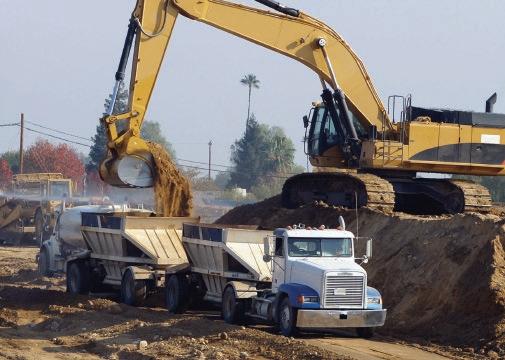
In the world of construction, there are many challenges. You have to balance the costs of machines, fuel and maintenance. And of course, you want to make the most out of your business investment. As your ally for equipment efficiency, we can help with that!
Shell Diesel Extra is especially designed to help save fuel by up to 3%1, reduce maintenance costs and increase the operating hours of your machines. Find out about the potential savings and further benefits of Shell Diesel Extra at www.shell.ca/commercialfuels
Shell Diesel Extra is now available from Bluewave Energy, www.bluewaveenergy.ca
Fuel economy claim tested by





